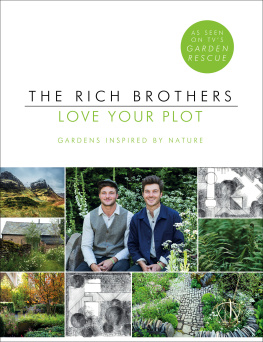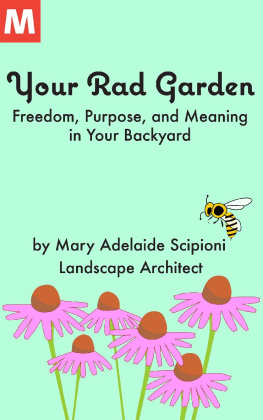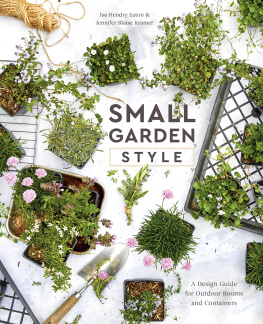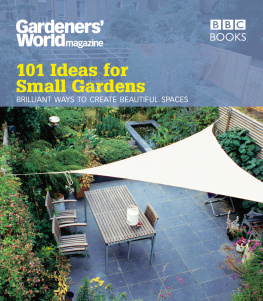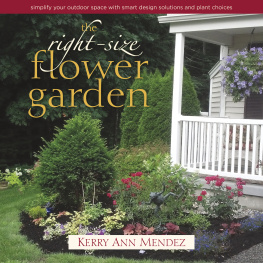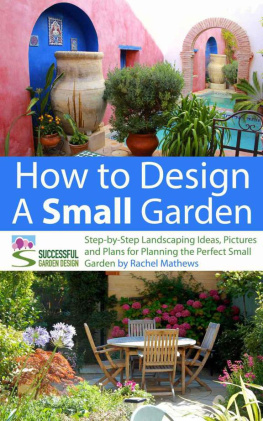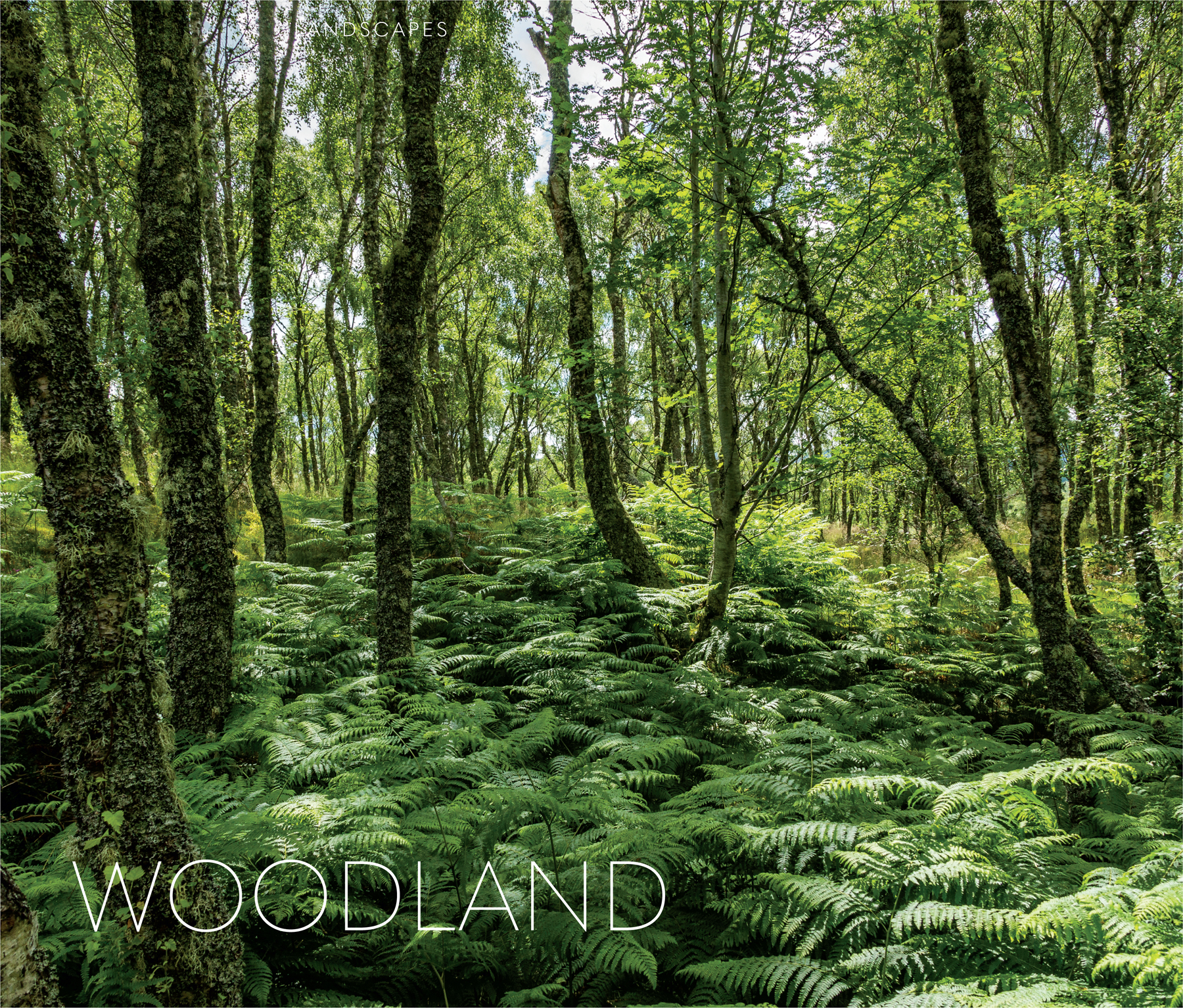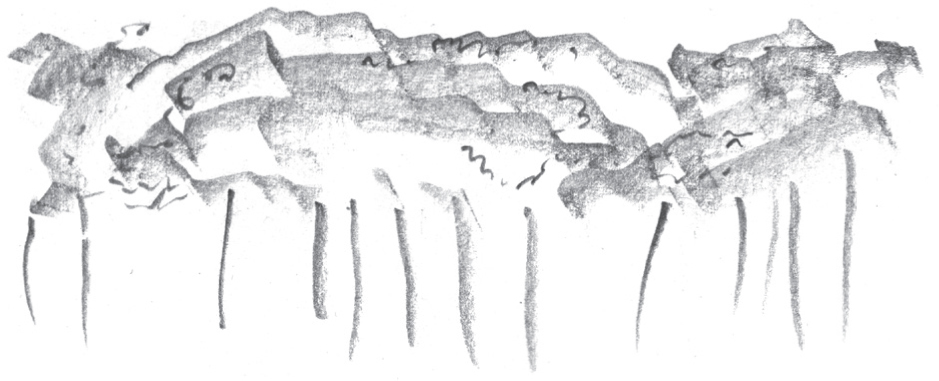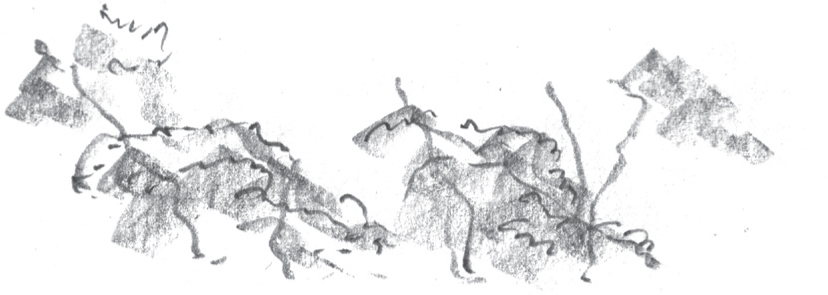CONTENTS
ABOUT THE BOOK
EVERY GARDEN IS UNIQUE
Whether you own a large country estate, a modest garden or a small urban balcony, the key is to look for inspiration in nature that is relevant to your individual space.
Surrounded by nature from a young age, David and Harry take pleasure in creating happy, healthy, sustainable environments, indoors and out. In LOVE YOUR PLOT they teach you how to take inspiration from unique design influenced by outstanding areas of natural beauty. Theyve included personal concept sketches along with mood boards, planting schemes, construction details and practical methods, to help you fuse these elements together and recreate the same feeling and character within your own garden.
ABOUT THE AUTHORS
HARRY AND DAVID RICH were the youngest ever winners of a gold medal at the Chelsea Flower Show in 2013. They went on to win a second medal two years later on Main Avenue. They are currently co-presenters of the BBCs Garden Rescue, alongside Charlie Dimmock. Originally from Wales, the brothers now work from their London-based studio. They love the outdoors and are keen surfers.
ACKNOWLEDGEMENTS
Writing this book has been a really special moment in our lives. There have been a lot of long days and late nights, but weve had so much fun throughout the whole process. Without the people involved helping us along the way, this book wouldnt have been possible.
Firstly, wed love to thank Ajda Vuievi who has been a great laugh and an absolute pleasure to work alongside, as well as everyone at Penguin Random House, especially Becky Millar, for keeping us on track.
Wed also like to thank Tim Barnes for dealing with our frequent layout requests :) thanks for the justified text! Lizzy Barlow Brown and Lizzy Morgan from James Grant Management have been with us all the way, and of course, Rory Scarfe thanks for doing the deal!
Without the BBC we wouldnt be in the position we are to write this book, so wed like to thank Alex McLeod for commissioning Garden Rescue, and everyone else who has been a part of the series.
Some of our fondest memories are of exploring the woodland above our family house. Its one of the first places we really got to experience the changing seasons.
To us woodland possesses a serene and intimate character, giving us a sense of being alone and at one with nature. When we think about woodland we picture undefined pathways, dappled light and varying tones of green, indicating a habitat that is rich with life.
Strong repetition of vertical forms draws the eye to the canopy above where trees and shrubs merge with one another, creating a formless structure that unifies the whole. It is this balance and harmony that we seek to recreate in our woodland designs.
WOODLAND HABITATS
In woodland generally the trees create an overlapping canopy, casting shade over the ground, though where some light filters through a variety of specially adapted plants are able to thrive.
LOWLAND MIXED DECIDUOUS WOODLAND
These often ancient woodlands can be found in southern and eastern England, lowland Wales and Scotland. They are comprised of species such as oak, birch and ash, and have a rich understorey layer of hazel and holly. The ground layer is rich and diverse. It may include carpets of bluebells, wild garlic, grasses and sedges.
LOWLAND BEECH AND YEW WOODLAND
About 45% of beech woodlands grow on neutral to slightly acidic soils. (pH 74) and can include species such as beech, ash, sycamore, yew and whitebeam. In the UK they are commonly found in the High and Low Weald, the Chilterns, the New Forest, the Cotswolds and the Wye Valley.
UPLAND MIXED ASHWOOD
These woodlands are typically found on alkaline soils that form over limestone within the north and west of the UK. These woodlands tend to be ancient, although ash is a resilient and quick-growing tree so has the ability to colonise new ground quickly. Although they are the most dominant species in this woodland, other trees such as oak, birch, wych elm and rowan can also be found.
UPLAND OAKWOOD
These woodlands are found in the north and west of the UK in areas of high rainfall, usually above an altitude of 250m. A variety of species such as holly, rowan and hazel form the understorey layer, and bracken and wavy hair grass can be seen covering areas of the woodland floor.
UPLAND BIRCHWOOD
Birch is a pioneering species and can grow on poor soil where the conditions are wet and exposed, unlike species such as rowan, ash, aspen, alder, bird cherry, hazel, hawthorn and blackthorn that are found only on more fertile sites. In the UK there are three species of birch that are native: silver birch, downy birch and dwarf birch. These can be found at altitudes of 250ft+ and are very hardy.
NATIVE PINE WOODLAND
Found growing on infertile soils, they tend not to sustain a large diversity of plants and wildlife. Scots pine is the dominant species within a pine woodland but species such as birch, rowan, alder, willow and bird cherry are also found. These woodlands are commonly within the central and north-eastern Grampians and in the northern and western Highlands of Scotland.
WET WOODLAND
Wet woodlands are commonly found on flood plains and on the banks of rivers, streams and lakes. Species such as willow, birch and alder thrive in these poorly drained, seasonally flooded areas around the UK. They provide a habitat for a diverse range of wildlife such as otters, birds and bats.
STRUCTURE OF A TYPICAL DECIDUOUS WOODLAND
CANOPY LAYER
LARGE TREES
Large deciduous trees typically form the canopy layer. Their leaves are broad so reduce the light available to the lower layers.
Oak
Quercus robur
Ash
Fraxinus excelsior
Beech
Fagus sylvatica
SUB-CANOPY LAYER
SMALL TREES / SHRUBS
The sub-canopy is formed where more light and rainfall is allowed to filter through to the woodland floor, encouraging growth between the taller trees. These shrubs, adapted to grow in lower light levels, tend to have a wider growth form so as to increase the surface area available to absorb light.
Hazel
Corylus avellana
Hawthorn
Crataegus monogyna
Holly
Ilex aquifolium
Dogwood
Cornus sanguinea
FIELD LAYER
FERNS, GRASSES, SEDGES, HERBS
A field layer materialises when a significant amount of light hits the woodland floor, for example after coppicing has taken place. The more open the woodland canopy, the more diverse the species that will be found.
Male fern
Dryopteris filix-mas
Red fescue

